$200 million for touching up a concert hall? Not again…
mainThe government of New South Wales has decided to sink a fortune into ‘renewing’ the concert hall inside Sydney Opera House.
Bad move.
The concert hall has never been great from the day it opened, and never will. London has squandered hundreds of millions on two bad halls, the Royal Festival Hall and the Barbican, achieving no more than marginal acoustic improvements.
Sydney should learn from these mistakes.
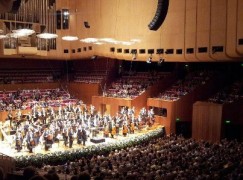
press release:
Statement from Sydney Symphony Orchestra Managing Director, Rory Jeffes:
The Sydney Symphony Orchestra applauds the New South Wales Government on its decision to renew the Sydney Opera House Concert Hall
The Sydney Symphony Orchestra welcomes today’s announcement by the NSW Government to invest $202 million towards the renewal of the Sydney Opera House and specifically its largest theatre, the Concert Hall.
Since the Sydney Opera House opened in 1973, the SSO has been the building’s resident orchestra performing more than 200 concerts each year in the concert hall to over 200,000 people.
We applaud the vision demonstrated by the NSW Government through this announcement in wishing to make Sydney a major centre for the Arts in the Asia-Pacific region. Having toured across China and Asia multiple times and witnessed the calibre of the performing arts venues across the Asia-Pacific, the SSO knows what a vital piece of work this is for NSW in order for our state to remain culturally competitive.
Not only will the revitalisation of the Concert Hall have a major impact on the arts community in NSW and Australia, but it will have positive repercussions for the economy of NSW, leading to a growth in tourism and audience engagement. Such a critical piece of infrastructure development deserves cross-party support and we trust that regardless of the outcome of the March NSW state election, this initiative will indeed come to fruition.
When former SSO chief conductor Eugene Goossens spoke in the 1940s of the need for Sydney to have a world-class concert hall, he dreamed of the Sydney Opera House. He wished to see a venue created for music, and for the people, an ambition which included a concert hall with perfect acoustics for his beloved Sydney Symphony Orchestra. It is my hope that Mr Goossens’ vision will now be achieved through today’s announcement.

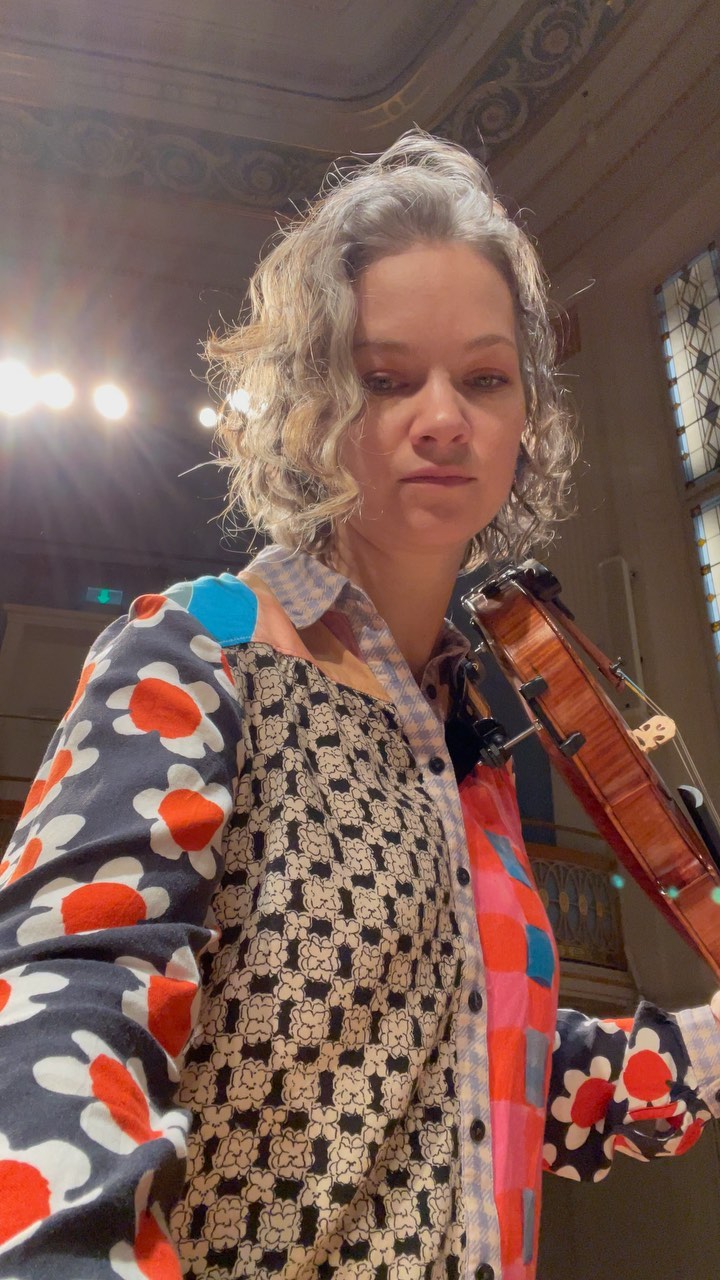
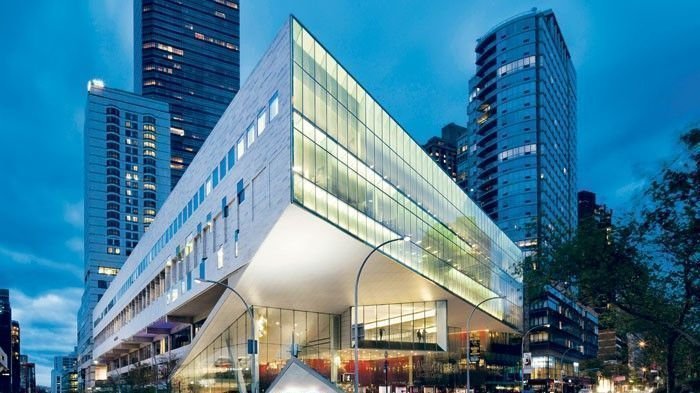
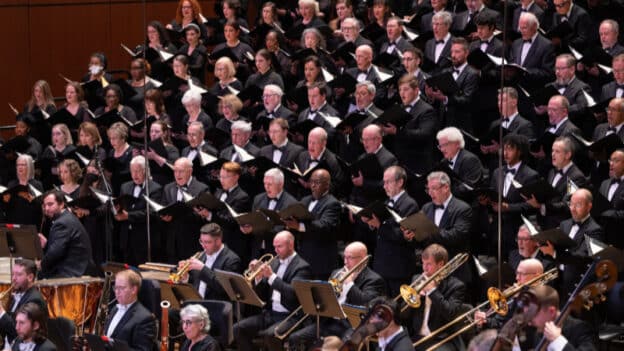
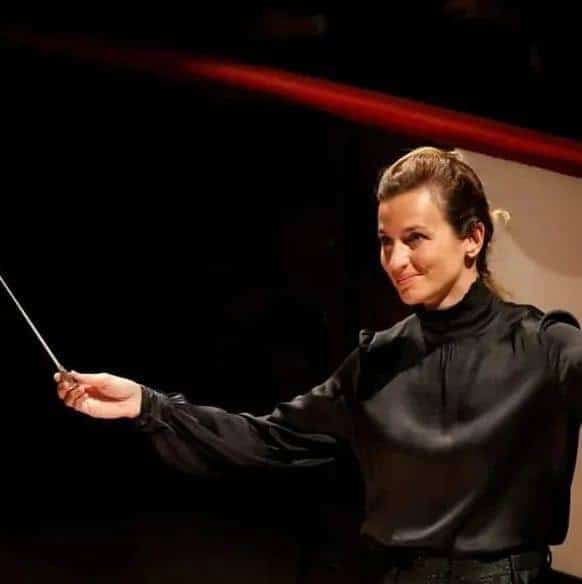
Well, what are they supposed to do? Given that the SOH is one of the wonders of modern architecture, they’re kind of stuck with it. A pity, really, because as Time Magazine said at the 1973 opening, what Sydney needs is an Opera House.
Unfortunately, going back to the original Utzon design probably won’t work, as I believe the original idea was to have an auditorium woth, in effect, a retractable proscenium that could alternate between an opera and concert hall setup. Way ahead of its time.
“Sydney should learn from these mistakes”
…but we’ve all spent the last week agreeing that London shouldn’t. Right?
When the Royal Festival Hall first opened, Stokowski clapped his hands to test the acoustic and stated, “If you want my opinion, you’ll tear the whole thing down and start again.”
As we know, it is the pretentious arrogance of modernist architects who dismiss the best possible, multi-tested shape of concert halls: the shoebox, with ornamentation for spreading and harmonizing the sound. If they only were a bit modest… and prepared to learn from history.
Nashville did so, and they followed the example of the Viennese Musikverein: http://www.nashvillesymphony.org/media/resources/photos
Have you been to the new Paris Philharmonie? Couldn’t be further removed from a shoebox, yet acoustics are excellent. Same could be said of the Berlin Philharmonie, not very shoeboxy either.
Yes, but these halls are the exceptions and their construction incolved great trouble to get the acoustics right, if I remember well. And they look terribly ugly, like the interiors of Star Trek space ships, not expressing anything remotely related to art, music, or showing any hint of stimulation of the senses – it’s the usual sterile style of the utopias of half a century ago, so actually very oldfashioned in the wrong way. If halls can only be oldfashioned, why not in the right way, like the 19C halls that have shown to work so well?
I’ve heard this hall in person and believe that nothing but a complete rebuild will solve its acoustical problems. But they might have a problem shoehorning a proper shoebox hall beneath the iconic sails of the exterior. Something like the outstanding Tokyo Opera City’s hall, Leo Beranek’s acoustical masterpiece, might just fit.
And since Oz seems to be in competition with the rest of the Asia-Pacific region, I might also mention that the Sydney hall also has poorer acoustics than the Esplanade hall in Singapore and the National Concert Hall in Taiwan. Both of the latter are shoebox halls. There’s definitely a pattern here, and elsewhere where there are modern halls with good acoustics (Dallas, Birmingham, Lucerne etc.).
But Dallas and Birmingham adhere close to the shoe box type.
That’s what I meant: most of the good-sounding modern halls are showbox in overall plan. It is the most reliable way of getting good acoustics, and possibly the least expensive. Just think of the post-Berlin-Philharmonie non-shoebox halls that have been utter failures, like Munich’s Gasteig.
When the Festival Hall first opened, Stokowski clapped his hands to test the acoustic and told the architect, “If you want my opinion, you should tear it all down and start again.”
I think they should spend even more!
Go back to the original plan and use the larger auditorium as a proper opera house. Use the smaller one for something else, chamber music maybe, and build a full sized concert hall from scratch somewhere else.
As Sixtus suggests, the iconic exterior is a blessing and a curse.
London’s South Bank is not in the same league and should have been bulldozed.
And since Oz apparently considers itself in competition with the rest of the Asia-Pacific region, I might also add that the Sydney hall’s acoustics are poorer than those of the Esplanade hall in Singapore and the National Concert Hall in Taipei, both of which I’ve heard. Both of those are also shoebox halls, nudge nudge, hint, hint. The great city of Sydney (one of my favorite cities) deserves far better than it has.
Are there any true success stories with rebuilt halls? Any cases where halls started out bad acoustically but where eventually made really good?
I believe both Davies Hall (San Francisco) and Roy Thompson Hall (Toronto) were horrendous in their original form, but did improve substantially after major renovations.
Severance Hall, Cleveland
I part, the mediocrity of acoustics in the opera and concert halls in the Sydney Opera House is another consequence of getting rid of architect Jorn Utzon. Utzon had promising concepts for the building’s interior …that were ignored. The petty bureaucrats in the government made poor decisions to cut costs but it all ended up costing much more and compromised the result.
If the hall was gutted and rebuilt from scratch a new design could be very successful. The ability of acousticians to use computer modeling these days more or less guarantees decent acoustics appropriate to the purpose.
It’s surely somewhat ironic that the SSO release brings up the wishes of its excellent former MD Sir Eugene Goosens. Whilst Goosens may have loved the orchestra and Australia, it was officials in that country who set up the scandal that was to drive him from Australia and ruin his reputation – almost in the same manner as the conviction for indecency ruined the life of Alan Turing.
The statement is also, I believe, not wholly accurate. Goosens certainly wanted a home for the SSO. However, he also wanted “a fine home for an opera company,” as he considered the Sydney Town Hall too small for most of the operatic repertoire.
Those with long enough memories will recall that the Concert Hall in the Opera House was never intended to be the Concert Hall. That space was to be for opera. Once the politicians were on board, the Opera House itself was to have a seating capacity close tof 3,000.
I remember reading that about $500,000 had already been spent on the latest flying equipment which then lay disused and rusting after the State Government or whoever made the decision very late in the day that there wasn’t enough of an audience for opera and the lobbyists for the Sydney Symphony won out. So this fabulous iconic structure has an acoustically imperfect Concert Hall and an impossibly small and wholly inadequate Opera House. The latter space is now named the Joan Sutherland Theatre. The Dame herself once famously remarked it had a “pocket handkerchief of a stage”, no wing space and a tiny orchestra pit that was a safety hazard to the hearing of the musicians. Utzon himself called the whole affair “Alice in Blunderland”!
And how much did this disaster all cost? With a budget of A$7 million, it ended up at $102 million. I wholly agree with Sixtus. Like many new halls in Asia, the Tokyo Opera City Concert Hall is an acoustical marvel. But then it was always designed as a Concert Hall – not an Opera House. Will however much of the A$200 million earmarked for renovations to the Concert Hall actually achieve much improvement in its acoustics? Like NL I very much doubt it!
A pardon for Eugene Goossens is long overdue.
The large hall (now the Concert Hall) was intended to be a dual purpose hall – concert and opera – and the smaller hall (now the Joan Sutherland Theatre) was intended for drama. This (planning) was the middle of the last century remember, in a country barely at puberty.
I saw some of original stage machinery installed, including a revolve. Its fate was indeed to rust by a railway line.
Nonetheless, opera has been regularly performed in the Concert Hall, either fully staged, semi-staged, or in concert – the list way too long to notate – and invariably with considerable success, not the least because of the sheer joy of hearing an decent sized orchestra in full fight, but often benefiting from some acoustic enhancement either by set construction behind the concert platform (as in Sutherland’s Lucia – they mounted several big productions for her, but not only) and/or a screen for video projections (as in the Sydney Symphony’s recent Dutchman and upcoming T & I).
There’s little to gain from preemptively bagging attempts at betterment especially considering today’s electronics are increasingly considered as valid as hardware alterations in achieving good acoustics and who knows yet what is under consideration.
Regardless, the building has brought and continues to bring enormous pleasure and artistic satisfaction to millions and for all its faults is as successful as any arts complex anywhere – crawling with people day and night.
Please tell us more about the fully-staged operas in the Concert Hall or the sources where we could get this information.
I have seen opera in the Opera Theatre and been underwhelmed. I was certainly aware that opera is very occasionally presented in the Concert Hall. But surely the primary purpose of that space was originally as a home for the opera company? When being designed, was the smaller space ever intended as the home of what is now Opera Australia?
I also wonder about the technical challenges of presenting opera in the Concert Hall without the stage machinery. The width limitations of the site resulting from both performance spaces being side by side surely results in there being little more wing space than in the Opera Theatre. As Jorn Utzon later wrote –
“One functional problem arising from the size of the site was that it was impossible to place the large wings or side-stages at the same level as the stage itself. Therefore these were placed below, in the plateau, an arrangement also seen in a few other theatres in the 1960s.
“From here the sets were transported to the stage with large elevators, arranged in a paternoster system, providing a continuous up and downwards movement of the sets for the smooth operation of the stage in the large auditorium or Major Hall.”
Oddly, the Sydney Opera House’ own website even makes no mention of opera performances in the Concert Hall –
“Extraordinary venues call for incredible performances, which is why the elegant Concert Hall is a natural home to the Sydney Symphony, Australian Chamber Orchestra and Sydney Philharmonia Choirs.”
But I do not live in Australia and please correct me if I am wrong.
Michael, with apologies for the delayed reply:
My memories are my major source. I’ll do my best to get a few links and references, but I am away from my library so bear with me. At the outset, the Phantom has been in the Concert Hall from the very beginning – the 1973 all Wagner opening concert with Birgit Nilsson/Mackerras.
The first fully staged opera in the concert hall was two years later with a monumental Aida set constructed such that the set and the hall merged as one. Ingenuity prevailed: e.g. without wings and the need for a felucca to cross the stage, the boat was made in three sections and as the first section emerged to its full extent, the middle section was adjoined and likewise the third such that to all appearance a substantial boat sailed across as if from nowhere, and disappeared off the opposite side of the ‘stage’ as the process was reversed.
A fully staged Salome followed. Later a ‘floating’ perspex platform over water surrounded by dreamy white silk (hiding the rear and side boxes) delivered a memorable T&I.
The 1980s were very much the Joan Sutherland Decade, with four fully staged operas in the Concert Hall. And Joan had its measure. Lucia, Lucrezia Borgia, Merry Widow, Otello. Here’s the daring Widow entrance (down the choice stalls essentially – you can see the exposed orchestra) and who said she didn’t do chest voice?
Worth a mention also is the concert Ring Cycle (Edo de Wart) over the three years leading up to and including the Sydney Olympics.
The Sydney Symphony is now increasingly making a feature of concert/semistaged/visually enhanced opera in the Concert hall. Recent we have had a splendid Pique Dame, a visually very compelling Dutchman, and T&I is coming up mid-year.
I am just back from the 2015 Opening Gala (Robertson) with some brilliant programming: Bruckner’s Christus factus est followed without pause by Act III of Wozzeck with some emotive acting by the soloists and special lighting effects and then Beethoven’s 9th. Remember Woyzeck was executed in 1824 after significant public debate about his culpability and mental state, and Beethoven completed his 9th in … 1824.
Enough already. (and sorry if any of those links fail)
Erratum: Merry Widow entrance down the *choir* stalls
The acoustics designer of Birmingham Dallas Lucerne etc , the story goes , was invited to the SOH to advise on the acoustics.
His advise ? “Pull it down and build another”
He knew – just listen to his halls !
I will agree that most of the shoebox halls I’ve been in – Concertgebouw, Musikverein, Symphony Hall, Benaroya (Seattle) – are magnificent. But so is the Moscow Conservatory, Carnegie, Vancouver’s Orpheum, even Ljubljana’s Cankarjev Dom – none of them shoeboxes. And I’ve been in a few lousy shoeboxes – Fisher Hall and Prague’s Smetana Hall among them. And the Berlin Philharmonie is the farthest thing from a shoebox but a magnificent place to experience music, I hear. So there could be hope for Sydney.
If I remember correctly Avery Fisher hall was designed to sound perfectly by the architects and acousticians and then the politics decided to make it much bigger which spoiled the acoustics.
The first edition of acoustician Leo Beranek’s book on concert halls (Music, Acoustics & Architecture) shows a sketch of a strictly shoebox-shaped proposal for NYC’s Philharmonic Hall that likely would have been fine–and possibly superior to the Cyril Harris attempt at a revamp known as Avery Fisher Hall–had it actually been constructed as drawn. Then it was decided, probably over Beranek’s objections, to increase seating capacity . . .
That sounds right. Wikipedia tell’s the story…..
“Architects hired the acoustical consulting division of Bolt, Beranek and Newman (BBN) to design the original interior acoustics for the hall. Their acousticians recommended a 2,400 seat “shoebox” design with narrowly spaced parallel sides (similar in shape to Symphony Hall, Boston). Lincoln Center officials initially agreed with the recommendation, and BBN provided a series of design specifications and recommendations. However, the New York Herald Tribune began a campaign to increase the seating capacity of the new hall and late in the design stage it was expanded to accommodate the critics’ desires, invalidating much of BBN’s acoustical work. BBN engineers told Lincoln Center management the hall would sound different from their initial intent, but they could not predict what the changes would do.”
I have to wonder if a defunct newspaper and “critics” have been made scapegoats in this telling of the tale. The architect, Max Abramovitz of Harrison, Abramovitz (Wallace K Harris did the UN and MET Opera) began to shape a plump curvaceous hall that was visually not unlike some very recent and successful new concert halls. I would suspect that this aesthetic, much looser than a “shoebox” scheme, had a logic of it’s own that took the design in teh wrong direction acoustically.
The 1970’s interior total rebuild had (has) problems created by the new design team. One acoustician diagnosed the new halls shortcomings. He said…..
“The seating capacity is large (around 2,600 seats) and the sidewalls are too far apart to provide early reflections to the center seats. The ceiling is high to increase reverberation time but the clouds are too high to reinforce early reflections adequately. The bass is weak because the very large stage does not adequately reinforce the low string instruments.”
So they will try again with version no. 3 when they find the money.
Perhaps they were “improved,” but even after the renovations nobody would consider the acoustics of either hall “world class.” I’ve heard San Francisco post-renovation and the sound on the main floor is on the dry side and still not sufficiently enveloping. It remains a fan-shaped hall with the resulting insufficient early lateral reflections.
Good points.
And I’d like to point out to anyone who thinks that arrogant architects are the problem responsible for bad concert halls that the performance spaces in the Sydney Opera House are bad because arrogant govt bureaucrats fired the arrogant (and brilliant) architect. Utzon was an exacting creator and it is unlikely, in my opinion, that he would have played fast and loose with the question of accoustics. But that’s speculation.
The story of the design and construction of the Sydney Opera House and of the political crisis that forced out its architect and the subsequent compromises made in its construction can be found in an excellent documentary…
Sydney Opera House: http://youtu.be/oOCFj5CkOdk
A quick review of recent articles on the building and changes anticipated suggest they intend to undo some of those compromises, some of them design by Utzon. Will the money be well spent resulting in improved acoustics? Needless to say Sydney Opera House will not be replaced and the desire that the buildings performance spaces live up to the buildings extraordinary prestige is hard to dismiss. This may be $200M spent the right way.
A footnote on the buildings history:
Utzon “resigned” and returned to Denmark in 1966 in protest of the decisions made by the govts point man for the project. Utzon’s resignation was intended by him to open discussion with the govt on important issues and give him some leverage. He fully intended to compromise and agree to return, but to his surprise his resignation was accepted.
Utzon, who died in 2008, never saw the completed building and never returned to Australia. He was finally honored by Australia in a public statement made by the Queen in 1999. Utzon was awarded the Pritzker Prize in 2003.